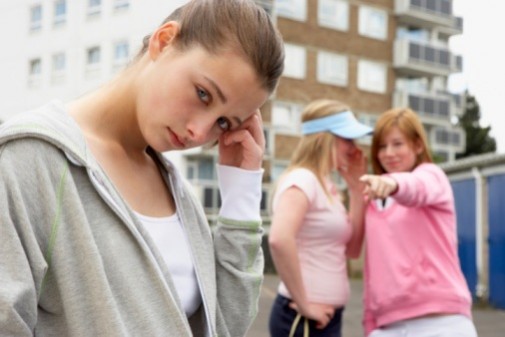Teens’ sexual identity raises harassment rates

Sexual identity in youths plays a key role in the percentage of U.S. teens who report being sexually harassed, particularly among young women, a new study reveals.
The study, published in late October in the journal Child Abuse and Neglect, found that in comparison to their heterosexual peers, teens who identified as gay, bisexual or “questioning” were more likely to report being a target of sexual harassment in the past year.
Researchers understood that lesbian, bisexual, gay, transgender, queer/questioning (LGBTQ) youth reported being victimized more often, but what was new was that bisexual girls and lesbian girls were reporting harassment in greater numbers than bisexual and gay boys.
Results of the study were based on more than 5,000 U.S. teens’ responses from a Teen Health and Technology survey taken between August 2010 and January 2011. The research examined variation in rates of sexual harassment methods (online vs. in-person), type of harassment, impact of sexual harassment and how this type of harassment is experienced across sexual orientation and gender identity groups.
Sexual harassment included such things as being asked to do something sexual and having obscene or sexual comments said to survey respondents.
Along lines of sexual orientation, the lowest rates of sexual harassment were reported by heterosexual boys (23 percent) and heterosexual girls (43 percent) while lesbian girls reported the highest rates compared to 66 percent of gay boys and bisexual girls.
In terms of gender identity, 81 percent of transgender youth reported the highest rates of sexual harassment. These teens were also more likely to suffer distress of some type because of these experiences.
Lead study author Kimberly Mitchell suggested in a Reuters News story that programs that teach others how to intervene on the victims’ behalf would help reduce the amount of sexual harassment seen along sexual orientation and gender identity lines.
Mitchell, research assistant professor at the University of New Hampshire’s Crimes against Children Research in Durham, also suggested tolerance by teachers who would be openly supportive of LGBTQ teens and programs that focused on building self-esteem could be “particularly valuable in both reducing the likelihood of victimization and lessen the impact when it occurs.”
Related Posts
Comments
4 Comments
About the Author
health enews staff is a group of experienced writers from our Advocate Health Care and Aurora Health Care sites, which also includes freelance or intern writers.


















My advice;
Don’t talk about your sex life. Dress in a neutral style.
I can’t imagine kids even caring unless you make a big deal about it.
I agree, Jbartelson. With all the pro-homosexual propaganda out there these days, lesbians and gays are pressing hard to recruit youth. If youth are taught to keep their sex lives private, (like everyone of any age should), then a lot of this bullying will stop.
What I want to know is, how many more letters are we going to string together when we label people? Should we even be using labels like this at all? Can’t people just be people instead of constantly prefacing everything with ‘Asian American’ or LGBTQRSTUV?
@jbartelson @Theprize73… I cant believe you two. Recruiting youth? How old are you two? So only girls can dress in pink and boys in blue and everyone in between should go grey? Kids make a big deal out of it simply because they have parent that sound like you two are (even though clearly you two don’t have kids in school or know someone dear to you who are gay by your comments). Do not comment unless you actually have experiences that are positive and want to help… until then that makes you an ignorant bullies.